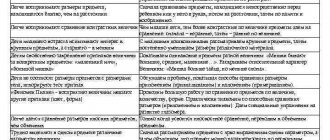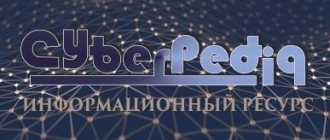Educational Technology Structure
Educational technologies have a specific structure:
- The conceptual part is represented by a specific concept or scientific base, which is based on certain pedagogical ideas that are the foundation of the technology.
- The content part is represented by general and specific educational goals, content and content of educational technology.
- The procedural part includes a set of methods, means and forms of educational activity of students, as well as methods and forms of teacher activity aimed at organizing and managing the pedagogical process, as well as diagnosing the quality of learning the material.
Currently, educational technologies in preschool educational institutions are becoming increasingly popular, as they make it possible to organize effective interaction between the teacher and students, as well as achieve high educational results.
Finished works on a similar topic
Coursework Modern educational technologies of preschool educational institution 400 ₽ Abstract Modern educational technologies of preschool educational institution 270 ₽ Test work Modern educational technologies of preschool educational institution 250 ₽
Receive completed work or specialist advice on your educational project Find out the cost
Interactive technologies in kindergarten
Today, in order to keep up with the times and constantly improve their teaching skills, kindergarten teachers have to use a complex of various developmental techniques and all their imagination. Educational standards provide for the use of various types of children's activities that the teacher must use to solve pedagogical problems. The authoritarian pedagogical style is a thing of the past; preference is given to democratic interactive technologies, implying multilateral communication, effective methods and methods of close interpersonal interaction based on dialogue, cooperation, and mutual understanding.
Interactive technologies are a set of pedagogical methods aimed at building the educational process in conditions of effective interaction.
Interactive technologies can be expressed in various forms:
- Individual (the child, with the help of the teacher, solves the problem himself, option – “child - computer”),
- Steam room (child-child interaction),
- Group (work in subgroups),
- Collective (active frontal work),
- Planetary (solving assigned problems by subgroups and choosing the optimal option).
Advantages of interactive technologies:
- Preschoolers develop individual personal conditions for self-development;
- Speech activity develops;
- Interpersonal relationships develop;
- Skills of playing in a team based on moral standards are developed;
- Children become aware of their personal intellectual worth;
- The psychology of success is being formed.
The implementation of interactive technologies in preschool educational institutions is possible subject to the conditions of comfortable cooperation between the teacher and preschoolers, motivation in solving the task, and the use of vivid images, examples, and objects.
Particular attention in the pedagogical process is paid to creating a comfortable creative environment and awareness of the intellectual competence of students. In an atmosphere of goodwill and support, within the framework of close interaction, free communication on equal terms, the preschooler feels personal success and the learning process becomes more productive. Interactive technologies are designed to make the learning process not just interconnected, but also more exciting and creative.
The introduction of interactive technologies in kindergarten is carried out in stages, taking into account age characteristics, for example:
- Younger age group: play in pairs, “children’s circle”,
- Middle age group: game in pairs, round dance, carousel, chain;
- Older age group: work in pairs, “children’s circle”, carousel, chain, interview, lesson in small groups (threes), aquarium;
- Preparatory (pre-school) group: lesson in pairs, “children’s circle”, chain, carousel, interview, lesson in small groups, large children’s circle, tree of knowledge.
It is worth noting that the teacher, based on his experience, can experiment with forms of interaction, and, for example, introduce interviews in the middle group.
interactive methods help stimulate the diversified development of a preschooler . This concept consists of two components: “method”, as a way of interaction between “teacher and child” and “interaction” – intensive activity between participants in the process. Accordingly, interactive methods mean enhanced pedagogical interaction during the educational process.
Interactive methods can be discussion, game, complex:
- Role-playing game (theater production, fairy tale),
- Interactive game
- Business game,
- Case method (solving a problem situation),
- Discussion,
- Clusters (search for associations),
- Microphone (alternate statements),
- Debate (discussion of statements),
- Project method
- Brainstorming and others.
Examples of the use of interactive methods in different age groups of preschool educational institutions
Junior or II junior group: interactive method of working in pairs.
The teacher invites the children to find a partner or helps them break up in pairs, hold hands and look at each other. This can be done while sitting on the floor, on chairs, or standing. As a rule, at this age children already know each other's names. Each pair is asked to hold a toy, cube, or ball together. The teacher can hand over a bright object to each pair. He announces to the children that these toys are magical; whoever holds it in their hands smiles. When passing a toy to each other, you need to call your partner by name and smile. At the same time, the teacher himself must radiate affection and a smile and demonstrate action. Children are prone to imitations, they will repeat. Teaching practice will be successful if most of the children smile. Further, the teacher can complicate the rules: children change pairs, toys, give compliments, etc.
Middle group: interactive chain game. The teacher prepares a toy in advance - Luntik and tells the backstory: Luntik flew from the Moon, he knows Kuzya, Shershulya, Vupsen and Pupsen... the children help list the heroes of the fairy tale. Next, the task is set: besides the listed heroes, Luntik knows no one, he is not familiar with animals from fairy tales, he needs to be introduced. The teacher hands the Luntik figurine to one of the children and asks them to pass it further down the chain and name animals from different fairy tales, for example, a wolf from the fairy tale “The Wolf and the Seven Little Kids”, a bear from the fairy tale “Masha and the Bear”, “The Three Little Pigs”, “Puss in Boots” " and so on. Passing Luntik to each other, children introduce him to fairy-tale characters. If a preschooler is lost, then the teacher and the children on the left and right of the chain help remember fairy tales. In conclusion, the teacher can invite the children to fantasize about Luntik’s adventures in the land of fairy tales or to draw fairy-tale animals.
Senior preparatory group: comprehensive interactive lesson “My favorite kindergarten.” The teacher sets a task: the children need to prepare a presentation about what they like most about the kindergarten. Children are seated at tables in small groups of 3-4 people, with drawing kits on the tables. The teacher invites one group to discuss the topic of which toys are the most interesting in the group, the second group - which dish in the kindergarten is the most delicious, the third group - what interesting things can be seen during a walk, the fourth group - what they like most in a music lesson, and so on. Children in small groups discuss their options, draw on sheets of paper, and choose a representative from the group. The teacher approaches each group, helps with choices and resolves disputes. Next, representatives from each group take turns going to an improvised microphone and voice what exactly they like about the kindergarten, demonstrating the best drawing or several drawings from the group. The teacher, summing up, during a frontal discussion, based on the most interesting moments, composes a story about his favorite kindergarten, summarizes the information he heard, or offers to make a single presentation for children who want to speak at the microphone. You can place the pictures as visual cues and invite the children to write the story “My Favorite Kindergarten.”
Options for additional and main discussion topics: “The kindergarten of my dreams,” “My favorite activity in the kindergarten,” “Choice of a fairy tale for the children’s theater,” “The best gift for mom,” “Decorating the kindergarten,” etc.
Interactive pedagogical technologies are directly related to the use of interactive technical means. More and more children's institutions have high-tech equipment in the form of sensory boards, educational gaming computers, and interactive panels. Their use helps make the educational process more fun, interesting, and productive.
With the use of interactive technologies, the roles of the teacher and children change. The teacher's initiative decreases, the children's activity increases. Pedagogical skill lies in the ability to create comfortable psychological and practical conditions for the creative development of children, to overcome the threshold of shyness of some categories of pupils, for productive interaction and the success of the educational process.
If you found the information on the site useful, please share it on social networks:
Related posts:
MAGAZINE Preschooler.RF
Presentation on the topic: The use of interactive technologies in the work of teachers and educators.The relevance of studying the possibilities of using interactive technologies in preschool education is caused by increased requirements for the quality of preschool education, including the level of preparation of children for school. Additional classes with children in the preparatory group are of great importance in this process. Such activities contribute to the development of children’s individual abilities, allow them to correct weaknesses and better prepare children for the next educational level.
The current generation of children from birth finds themselves in a very saturated information environment. The first toys of modern children are TV remotes, tablets, mobile phones, and only then dolls, cars and educational games. Currently, most Russian families already have a home computer, or maybe more than one, and children from birth watch their parents spend several hours a day on it. In addition, children see that on the monitor they can see what attracts them most at this age: pictures with children and animals, cartoons, video clips, etc. As practice shows, it is useless to prohibit children from approaching technology; it is always what attracts them which is prohibited.
The introduction of the Federal State Educational Standard into the educational process in our institution required a thorough analysis of teaching activities. Our team is ready to introduce and accept new things in preschool education. And this can be judged by achievements.
According to our teachers, it is not children who should adapt to kindergarten, but a preschool educational institution should strive to create the necessary conditions for each child, taking into account his inclinations and abilities, state of mental and physical health. Our kindergarten is in search of something new. To implement the state standard in a preschool institution, favorable conditions have been created in the light of modern requirements.
The use of interactive technologies is one of the effective ways to increase motivation and individualize children's learning, develop their creative abilities and create a favorable emotional background. It also allows you to move from an explanatory and illustrated method of teaching to an activity-based one, in which the child takes an active part in this activity. This promotes conscious assimilation of new knowledge. Learning becomes more attractive and exciting for children.
Interactive technologies are an integrated approach to organizing interaction with the subject environment or other people.
The importance of interactive technologies in educational activities lies in the possibilities for developing cognitive and communication abilities.
Interactive technologies can be implemented in the form
- group work
- use of technical means
- subject environment.
When choosing interactive technologies, it is necessary to take into account the age and psychological characteristics of preschoolers.
The advantages of using interactive technologies in the educational process of preschool educational institutions are undeniable and are confirmed by our own practical experience:
- presenting information on a computer screen or on a projection screen in a playful way is of great interest to children
- carries a figurative type of information understandable to preschoolers
- movements, sound, animation attract the child’s attention for a long time
- stimulates children's cognitive activity; provides the opportunity to individualize training
- allows you to simulate life situations that cannot be seen in everyday life.
It is advisable to use interactive technologies in working with children of senior preschool age in connection with the physiologically determined transition for older preschoolers from a visual-objective form of thinking to a visual-figurative one.
At the preschool institution at the moment it is:
- computers
- multimedia projector
- interactive board
- interactive table
- laptops
- TV
The information and communication technologies we use can be divided into:
- multimedia presentations
- information and educational computer programs
The use of ICT does not provide for teaching children the basics of computer science and computer technology. This is, first of all: the transformation of the subject-development environment, the creation of new means for the development of children, the use of new visibility.
Advantages of interactive equipment:
- Makes classes interesting and develops motivation
- Provides more opportunities to participate in teamwork and develop personal and social skills
- Children begin to understand more complex ideas as a result of clearer, more effective and dynamic presentation of material
- Allows for a variety of learning styles, teachers can access a variety of resources, adapting to specific needs
- The software includes a rich gallery of ready-made pictures, templates and multimedia videos with the ability to add custom objects.
- According to the experience of our teachers, the use of interactive equipment has significantly improved the quality of classes.
Based on the results obtained and experience in using interactive technologies, we can conclude that interactive technologies undoubtedly have a wide range of opportunities in educational activities, they allow us to activate cognitive processes, acquire new knowledge, abilities, and communication skills.
At the same time, using only interactive technologies will not provide a high-quality solution to pedagogical problems. Therefore, it is necessary to use educational technologies in a comprehensive manner, applying them taking into account the age and individual characteristics of children.
| Next > |
Educational technology concept
Definition 1
Technology is a set of certain techniques that are used in a particular business, art or skill.
Definition 2
Educational technology is a certain set of specific pedagogical methods, means, techniques and attitudes that ensure increased efficiency of the pedagogical process.
Educational technology has a number of requirements that distinguish it from methods and systems:
- Conceptuality - any technology is based on certain scientific ideas and concepts that predetermine the achievement of the educational goal.
- Systematicity - technology has all the features of an integral system: the logic of the process being implemented, the interconnection of all parts and components of the technology, the integrity of the structure.
- Controllability – provides for the possibility of diagnosing the technology being implemented, its compliance with the set goals and, if necessary, adjusting the methods and means used.
- Reproducibility - any educational technology can be taken by any teacher and introduced into the educational process, and it will also be effective and efficient.
- Efficiency - educational technologies guarantee the achievement of the set goal and results, at optimal costs (mental, labor, technical, material, etc.).
Are you an expert in this subject area? We invite you to become the author of the Directory Working Conditions
Note 1
Thus, if a system or technique claims to be called a technology, it must be developed to meet the specified requirements.




